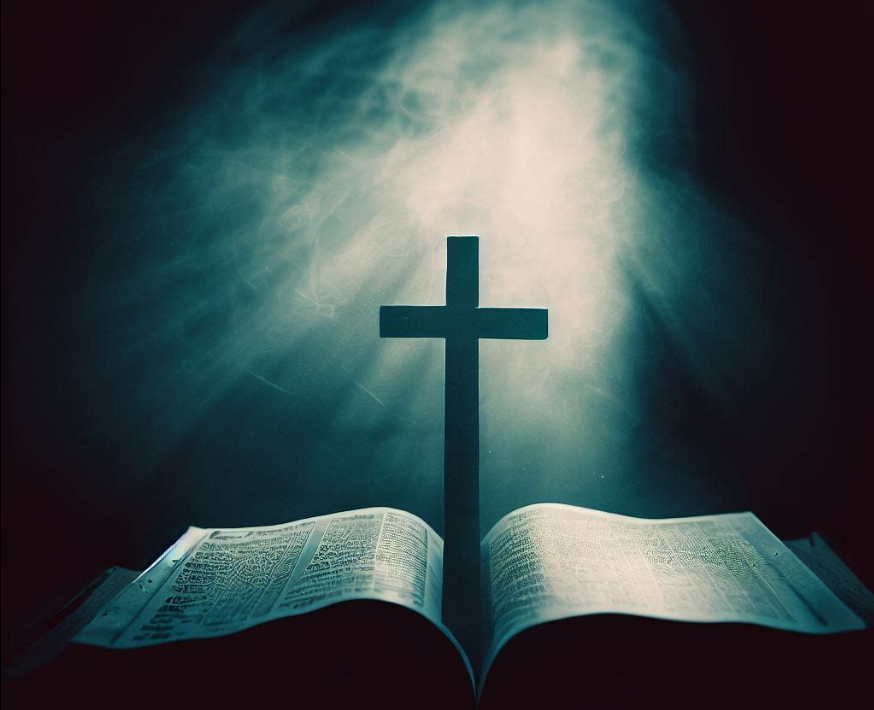The Genesis of Christianity

Christianity is one of the globe’s preeminent religions, and it surfaced around the 1st century AD. Its core is deeply entwined in the words, life teachings, and death of Jesus of Nazareth. Its inception can be traced back to the ancient Roman province of Judea, where it originated as a sect credited to Judaism.
The inception of Christianity was greatly influenced by the distinct teachings of Jesus, who proclaimed the beginning of God’s kingdom. The sayings of Jesus, his crucifixion, and his subsequent revival represent the cornerstone and the genesis of the Christian faith.
One of the eminent early disseminators of these spiritual teachings was a Jew known as Paul of Tarsus. Following a profound spiritual revelation, Paul converted from Judaism to Christianity. Profoundly devoted to his newfound faith, Paul embarked on missionary expeditions across the Roman Empire, during which he instituted small Christian communities. His determination and relentless mission to spread the teachings of Jesus played a key role in the evolution of Christianity to a global religion.
Its rapid growth and ascendancy was not without trials and tribulations. The oppressive Roman regime made concerted efforts to quash the Christian ideological framework with manifold forms of persecution. Despite the ruthless attempts aimed at its eradication, the religion not only prevailed but thrived during that time of relentless persecution.
Despite the relentless onslaught, the Christian movement successfully managed to resist and survive. A testament to its fervor and resilience, the faith defied the odds and continued expanding. Its growth was so extensive that it gradually metamorphosed from being perceived as a fringe sect to becoming a prominent religion over time. Today, it bears the emblem of a religion that managed to not just survive but flourish even in the face of substantial adversity.
The emergence of Christianity underscores the power of belief and the resilience of followers. Despite facing severe adversity, this initially small movement evolved to become one of the largest religions worldwide with billions of adherents located throughout various geographical locations. It is a captivating testament to the enduring appeal of its central theological tenets and the profound influence it has exerted over societal and cultural norms over the millennia.
Tryst with Official Acceptance and Expansion
The dawn of the 4th century bore witnesses to two pivotal events that played instrumental roles in magnifying the influence and status of Christianity within Roman society. One can pinpoint the genesis of this monumental evolution to the conversion of Emperor Constantine I to Christianity. Prompted by an inspiring vision of the Christian cross assuring his success in combat, his conversion marked a significant turning point in the history of Christian society, thus commencing the era christened as the Constantinian era, which spanned from 313 to 587.
Coupled with the conversion of the Emperor, another critical event catalyzed the rise of Christianity within the confines of the societal sphere. This was observed post the fragmentation of the Roman Empire; a juncture that garbed the Church with an umbrella of secular responsibilities that were previously held by the dismantled imperial administration.
Ascertainment of this secular position cast the Church in a resilient and pivotal role depicting it as the preserver of Christian traditions, beliefs, and disciplines. It is crucial to note that the identification of the Church as a stalwart epitomized the inherent traits of protection and preservation directed towards the ethos of the religion. This integral function curated a sense of faith and reliance on the Church, ultimately fortifying its dominant position within societal norms and affairs.
The interception of these strategic transformations fueled an accelerated propagation of Christianity, taking it beyond its traditional boundaries. The religion made a significant impact, echoing its teachings and principles across varied geographies, traversing Europe and navigating its way into parts of Africa and the Middle East.
The various shifting dynamics in the political and religious spheres, be it Constantine’s enlightenment or the Roman Empire’s downfall, aligned in a manner creating a favourable environment conducive to the extension of Christianity’s reach. This phase saw Christianity emanate from the core, spreading its roots firmly and significantly within the echelons of society.
The Church, being entrusted the mantle of secular responsibilities, together with the historical conversion of the Emperor, allowed Christianity to solidify its footprint and expand the religion’s influence over a larger populace and geographical expanse. It unfurled a new chapter in the annals of Christian history, drawing a colossal number of followers into its fold, thereby etching a distinctive mark in the religious landscape.
Modern Christian Practice and Denominations
Christianity, since its inception, has been a cornerstone of global faith practices and has encountered monumental changes since the 16th century. The ripple effect of societal, political, and philosophical revisions during this time incited what is now recognized as the Reformation. The transformative criticisms against the Church by Martin Luther instigated the establishment of Protestant Christianity. This shift fundamentally altered the identity and perception of Christianity both in Europe and across the world.
In the present day, the Christian faith extends its influence through three primary branches. These include Roman Catholicism, Eastern Orthodoxy, and Protestantism, each with its unique characteristics and areas of emphasis.
Roman Catholicism constitutes the biggest segment within Christianity. Adherents place a strong emphasis on tradition, deeply valuing the authority of the church. The practices, rituals, and doctrines of the Roman Catholic Church have remained largely consistent throughout its history, its roots dating back to the time of Christ and his apostles.

Eastern Orthodoxy holds a position of prominence within Russia and Eastern European countries. It is a faith branch that stresses the continuity with the initial Christian church. It incorporates ancient traditions in both its liturgical style and its theological approach, maintaining a deep sense of connectedness to the earliest Christian communities.
Protestantism, the third primary branch, lays emphasis on the doctrines of salvation by grace alone – a principle that salvation is received through faith. There is an emphasis on the priesthood of all believers, suggesting a direct relationship between the believer and God without the necessity of a mediator. Proponents further emphasize the supremacy of Holy Scripture as the final authority in matters of faith and order.
The Christian faith continues to mold and inspire worldwide communities, with numerous followers partaking in social justice initiatives and humanitarian work. The extent of Christianity’s reach reflects its dynamic, ever-evolving nature. Regardless of these transformations, the central thread remains constant – the message of love, peace, and redemption found in Christ.
As Christianity embarks on its historical path, it remains steadfast while facing trials and evolves to be the multi-faced spiritual system known today. Its past is indelibly marked on the pages of world history, shaping the course for its future. The story of this faith, though complex and marked by epochs of change, continues to unfurl, revealing that Christianity’s narrative progression is far from reaching its ultimate denouement.